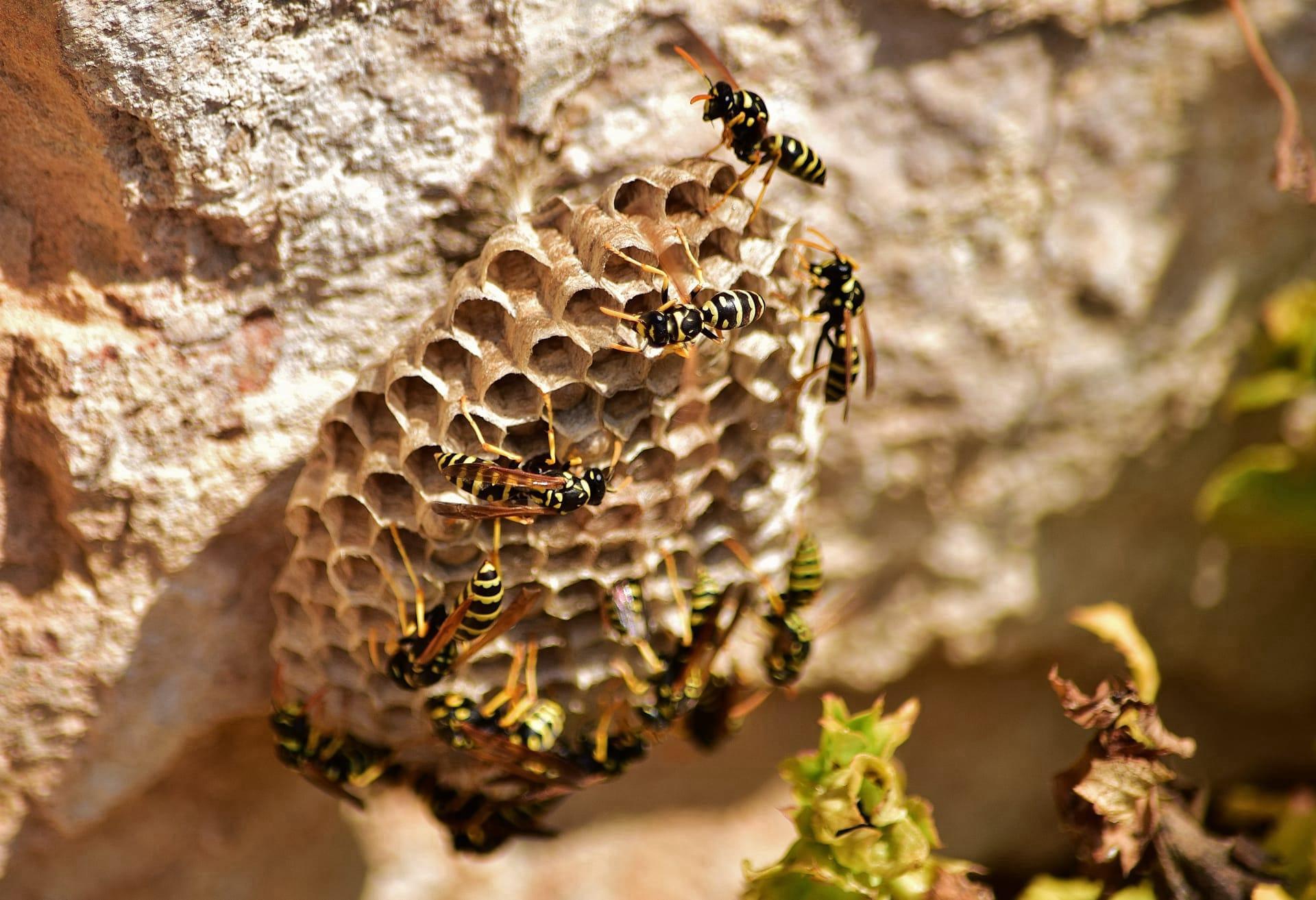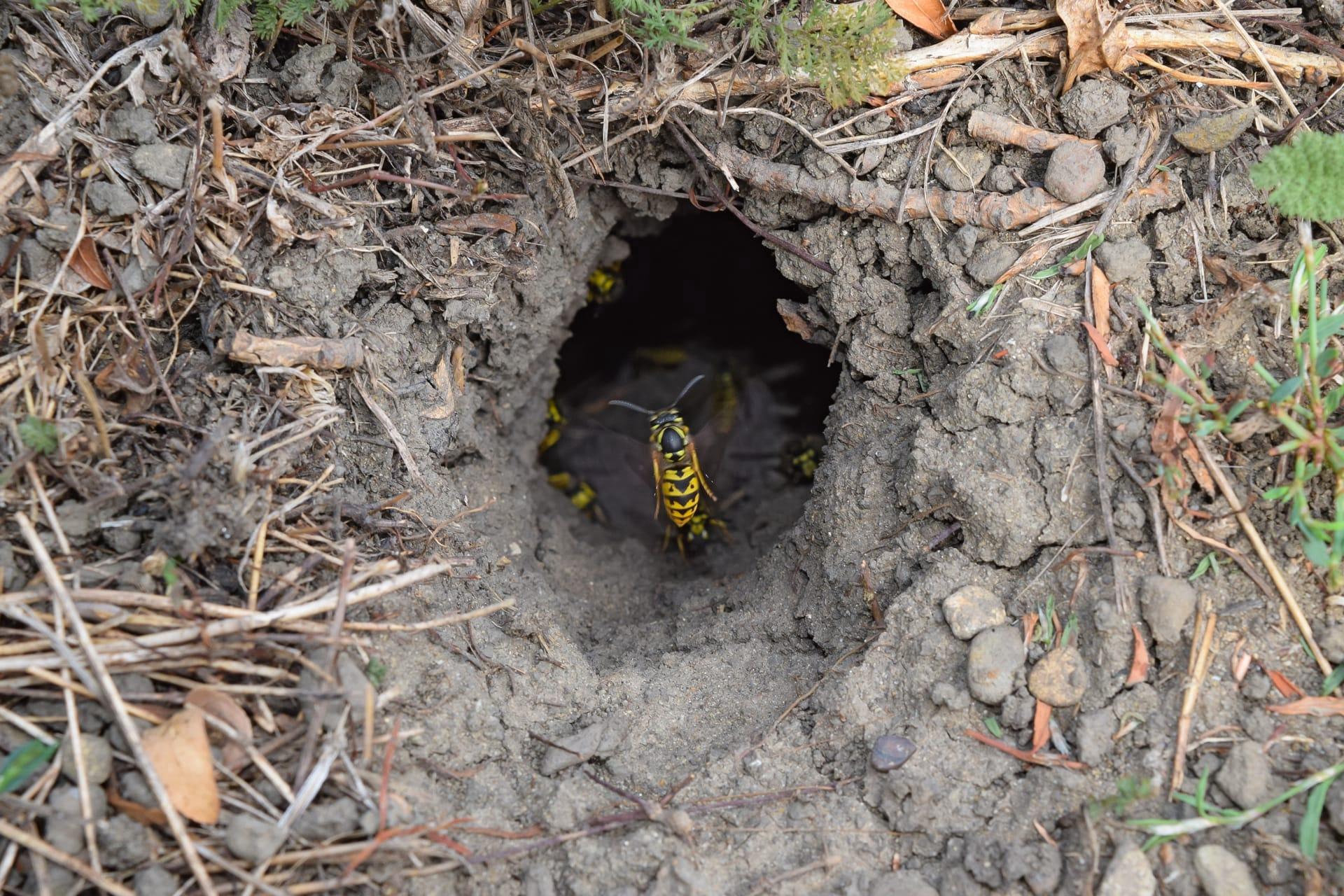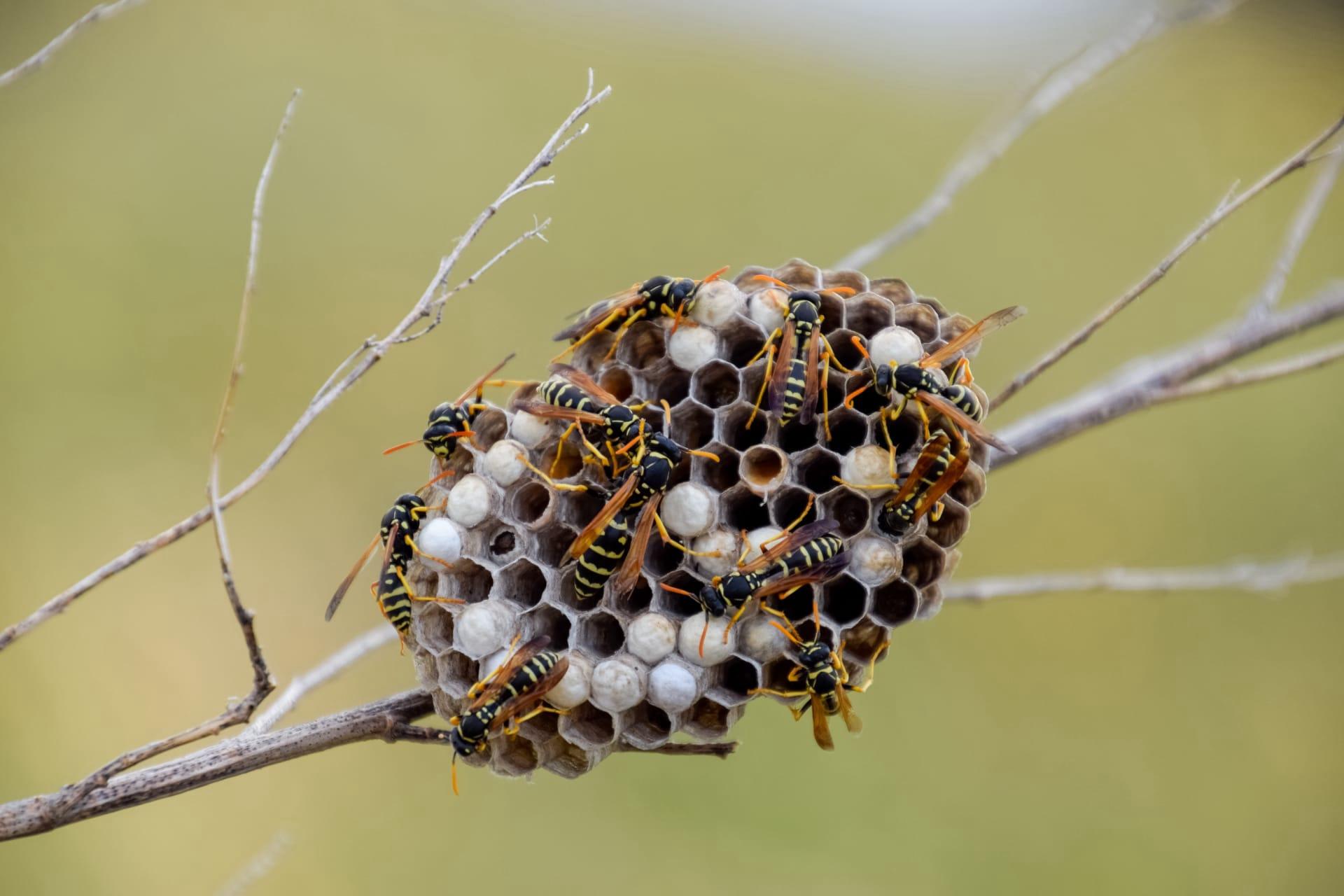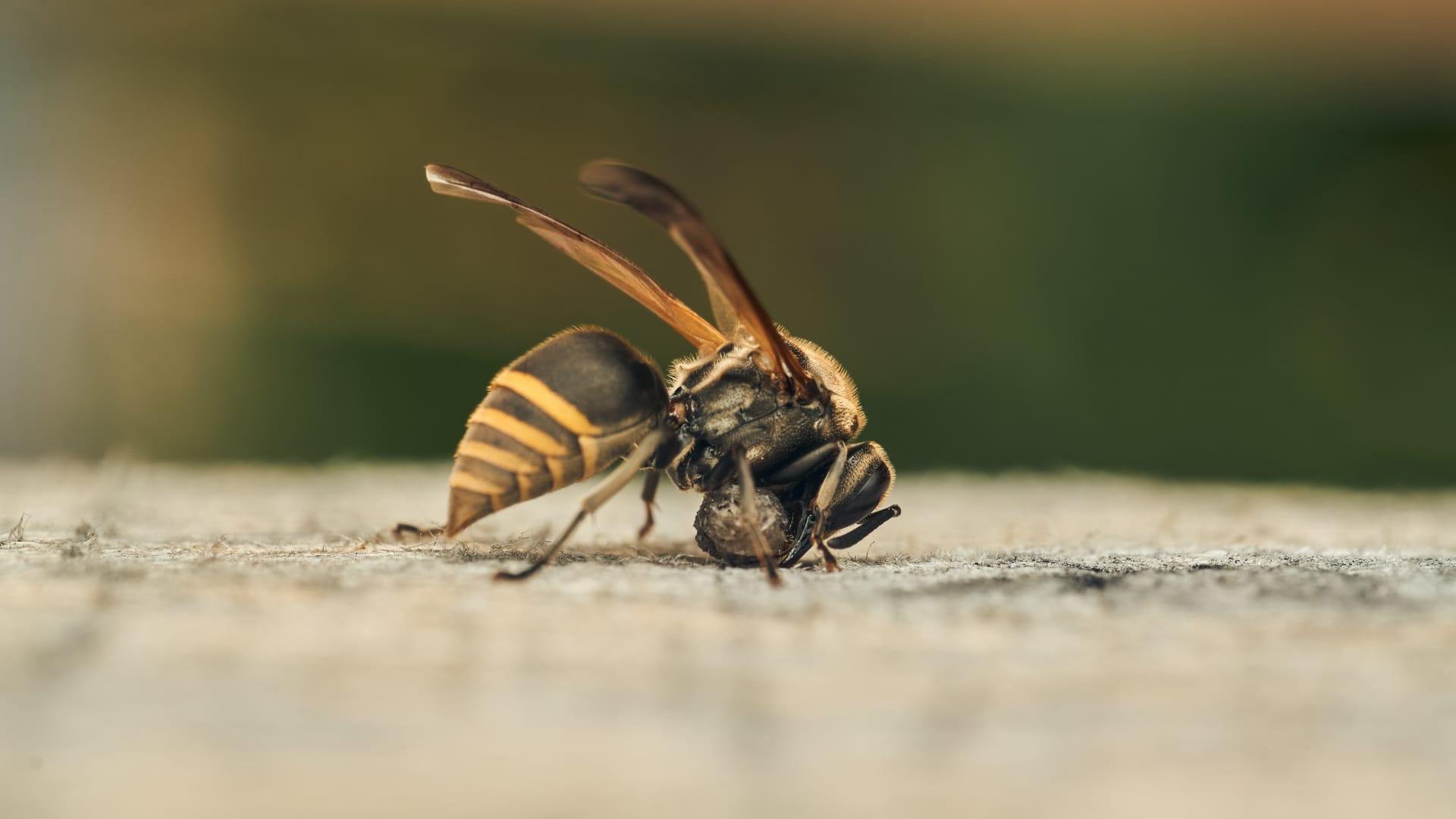Paper Wasp
- Home /
- Mini Encyclopedia /
- Animal /
- Paper Wasp
1
Paper wasps, scientifically known as Polistes, belong to the family Vespidae, which includes over 300 known species globally. These wasps are recognized by their slender bodies, which range from 0.7 to 1.0 inches (1.8 to 2.5 cm) in length, and are predominantly black, brown, or reddish in color with yellow markings. Their narrow waists connect the thorax and abdomen, and they have a distinct flight pattern, appearing to dangle their legs while in flight. Each species of paper wasp has its unique coloration and markings, making them distinguishable to the trained eye.
Paper wasps are widely distributed across the globe, particularly thriving in temperate climates. In the United States, they are commonly found across all states, favoring environments that offer shelter and food sources. Their presence is also notable in parts of Canada, Europe, North Africa, and Asia. These wasps prefer to inhabit gardens, orchards, and other areas with ample vegetation, as these locations provide them with nectar and caterpillars, which are their primary food sources. Interestingly, paper wasps are also known for adapting to urban environments, often building their nests under the eaves of buildings or in other sheltered areas.

2
Question: Are paper wasps aggressive and dangerous to humans?
Answer: A common misconception about paper wasps is that they are highly aggressive and pose a significant danger to humans. In reality, paper wasps are generally not aggressive and tend to avoid human interaction. They are considered beneficial insects as they help control pest populations by preying on caterpillars and other insects. However, they can become defensive if they perceive a threat to their nest or themselves. Their stings can be painful and may cause allergic reactions in some individuals, but such instances are relatively rare. It's important to approach their habitat with respect and caution to avoid unwanted encounters.

3
Paper wasps exhibit a fascinating survival strategy that involves both solitary and social behaviors. During the spring, fertilized females, known as queens, emerge from hibernation and seek suitable locations to build new nests. These nests are constructed from a paper-like material made by chewing wood fibers mixed with their saliva. This unique building technique results in durable, water-resistant nests that are typically umbrella-shaped and consist of open combs with cells for rearing young.
Another key survival strategy of paper wasps is their social structure. They live in colonies, which are founded by a single queen or a small group of queens. Within the colony, there's a hierarchy, with the dominant queen at the top. The other female wasps act as workers, performing tasks such as foraging for food, caring for the young, and defending the nest. This social structure allows for efficient division of labor, enhancing the colony's chances of survival and growth.

4
In the ecosystem, paper wasps play a dual role as both predators and prey. They contribute significantly to controlling the population of pest insects, such as caterpillars and aphids, by preying on them. This natural pest control is beneficial for agriculture and garden health, making paper wasps an important part of the ecological balance.
The presence of paper wasps also affects other species in the ecosystem. They are preyed upon by various birds, reptiles, and other insects, thus contributing to the food chain. Additionally, their nests, made from chewed wood pulp, highlight their role in the cycle of organic matter decomposition and recycling. This role underscores the interconnectedness of paper wasps with various elements of their ecological surroundings.

5
Film: "Wings of Life" is a documentary produced by DisneyNature in 2011, showcasing the vital role of pollinators, including paper wasps, in ecosystems. The film, narrated by Meryl Streep, is a visually stunning journey through the symbiotic relationships between insects and flowers, highlighting the often unnoticed yet crucial contributions of creatures like paper wasps.
Book: "Wasps: The Astonishing Diversity of a Misunderstood Insect" by Eric R. Eaton, published in the United States in 2020, provides a comprehensive look into the world of wasps, including paper wasps. Eaton, an entomologist, delves into their behavior, ecology, and the misconceptions surrounding them, offering readers a new perspective on these fascinating insects.
Book: Another notable work is "The Lives of Wasps and Bees" by Carol Ann Kearns, released in the United States in 2018. Kearns, a biologist, explores the intricate lives of various stinging insects, dedicating a significant portion to paper wasps. The book examines their social structure, communication methods, and role in the environment, providing an insightful and accessible read for anyone interested in understanding these complex creatures.